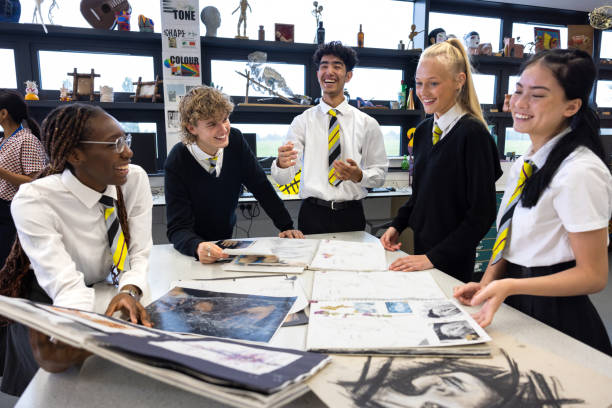
剑桥雅思13阅读Test4Passage2原文翻译
剑桥雅思13阅读Test4Passage2这篇文章讨论了全球土壤退化问题及其对人类生存的重要性。
这篇文章讨论了全球土壤退化问题及其对人类生存的重要性。全球超过三分之一的土壤面临危险,如果不能减缓土壤退化趋势,可耕种的土壤在60年内可能会消失。土壤对人类的重要性被强调,它种植食物、是抗生素的来源、对抗耐药细菌的希望、对抗气候变化的盟友、防止洪水损害的储存器。当前的农业实践和化学肥料的滥用加剧了土壤退化问题。文章还提到了一种有益细菌、真菌和腐殖质的混合物,这种混合物可以改善土壤质量。在解决土壤退化问题上,全球土壤地图项目的创建以及呼吁设立受保护区域都被提到。最后,文章强调了行动的迫切性。
A部分 More than a third of the world’s soil is endangered, according to a recent UN report. If we don’t slow the decline, all farmable soil could be gone in 60 years. Since soil grows 95% of our food, and sustains human life in other more surprising ways, that is a huge problem. | A部分 根据最近的一份联合国报告,全球超过三分之一的土壤面临危险。如果我们不能减缓这一下降趋势,所有可耕种的土壤在60年内都可能消失。由于土壤能够种植我们95%的食物,并以其他更令人惊讶的方式维持人类生活,这是一个巨大的问题。 |
B部分 Peter Groffman, from the Cary Institute of Ecosystem Studies in New York, points out that soil scientists have been warning about the degradation of the world’s soil for decades. At the same time, our understanding of its importance to humans has grown. A single gram of healthy soil might contain 100 million bacteria, as well as other microorganisms such as viruses and fungi, living amid decomposing plants and various minerals. That means soils do not just grow our food, but are the source of nearly all our existing antibiotics, and could be our best hope in the fight against antibiotic-resistant bacteria. Soil is also an ally against climate change: as microorganisms within soil digest dead animals and plants, they lock in their carbon content, holding three times the amount of carbon as does the entire atmosphere. Soils also store water, preventing flood damage: in the UK, damage to buildings, roads and bridges from floods caused by soil degradation costs £233 million every year. | B部分 纽约生态系统研究所的彼得·格罗夫曼指出,土壤科学家几十年来一直在警告世界土壤的退化问题。与此同时,我们对土壤对人类的重要性的理解也在增加。一克健康的土壤可能含有1亿个细菌,以及其他微生物如病毒和真菌,它们生活在腐烂的植物和各种矿物质中。 这意味着土壤不仅种植我们的食物,还是几乎所有现有抗生素的来源,并且可能是我们对抗耐药细菌的最大希望。土壤也是对抗气候变化的盟友:因为土壤内的微生物消化死去的动植物,它们锁定了碳含量,比整个大气层的碳含量多三倍。土壤还储存分,防止洪水造成的损害:在英国,由于土壤退化引起的洪水对建筑物、道路和桥梁的损害每年造成2.33亿英镑的损失。 |
C部分 If the soil loses its ability to perform these functions, the human race could be in big trouble. The danger is not that the soil will disappear completely, but that the microorganisms that give it its special properties will be lost. And once this has happened, it may take the soil thousands of years to recover. Agriculture is by far the biggest problem. In the wild, when plants grow they remove nutrients from the soil, but then when the plants die and decay these nutrients are returned directly to the soil. Humans tend not to return unused parts of harvested crops directly to the soil to enrich it, meaning that the soil gradually becomes less fertile. In the past we developed strategies to get around the problem, such as regularly varying the types of crops grown, or leaving fields uncultivated for a season. | C部分 如果土壤失去了执行这些功能的能力,人类可能会陷入严重困境。危险并不在于土壤会完全消失,而在于赋予其特殊性质的微生物将会丢失。一旦发生这种情况,土壤可能需要数千年才能恢复。 农业是最大的问题。在野外,植物生长时会从土壤吸收养分,但当植物死亡并腐烂时,这些养分会直接返回到土壤中。人类倾向于不将收割作物的未使用部分直接归还土壤以丰富它,这意味着土壤逐渐变得不那么肥沃。在过去,我们制定了一些策来解决这个问题,比如定期改变种植的作物类型,或者让田地闲置一个季节。 |
D部分 But these practices became inconvenient as populations grew and agriculture had to be run on more commercial lines. A solution came in the early 20th century with the Haber-Bosch process for manufacturing ammonium nitrate. Farmers have been putting this synthetic fertiliser on their fields ever since. But over the past few decades, it has become clear this wasn’t such a bright idea. Chemical fertilisers can release polluting nitrous oxide into the atmosphere and excess is often washed away with the rain, releasing nitrogen into rivers. More recently, we have found that indiscriminate use of fertilisers hurts the soil itself, turning it acidic and salty, and degrading the soil they are supposed to nourish. | D部分 但随着人口增长和农业更商业化的运作,这些做法变得不方便。20世纪初,哈伯-博施工艺用于制造硝酸铵,为这个问题提供了解决方案。农民们自那时起就一直在田地上撒布这种合成肥料。 但在过去的几十年里,很明显这并不是一个明智的做法。化学肥料可能会释放污染的氧化亚氮到大气中,多余的肥料也经常随着雨水被冲走,释放氮到河流中。最近,我们发现肥料的滥用伤害了土壤本身,使其变得酸性和咸味,并且破坏了它们本应滋养的土壤。 |
E部分 One of the people looking for a solution to this problem is Pius Floris, who started out running a tree-care business in the Netherlands, and now advises some of the world’s top soil scientists. He came to realise that the best way to ensure his trees flourished was to take care of the soil, and has developed a cocktail of beneficial bacteria, fungi and humus [Humus: the part of the soil formed from dead plant material] to do this. Researchers at the University of Valladolid in Spain recently used this cocktail on soils destroyed by years of fertiliser overuse. When they applied Floris’s mix to the desert-like test plots, a good crop of plants emerged that were not just healthy at the surface, but had roots strong enough to pierce dirt as hard as rock. The few plants that grew in the control plots, fed with traditional fertilisers, were small and weak. | E部分 寻找解决这一问题的方法之一是皮乌斯·弗洛里斯,他最初在荷兰经营一家树木护理企业,现在为一些世界顶级的土壤科学家提供建议。他意识到确保他的树木茁壮生长的最佳方法是照顾土壤,并已经开发出一种有益细菌、真菌和腐殖质的混合物来实现这一点。西班牙巴利亚多利德大学的研究人员最近在多年来过度使用化肥而破坏的土壤上使用了这种混合物。当他们将弗洛里斯的混合物施用在类似沙漠的试验地块上时,长出了茁壮的植物,它们不仅在表面健康,而且根系坚固到足以穿透坚如石头的土壤。而在控制地块上生长的少量使用传统肥料的植物则又小又弱。 |
F部分 However, measures like this are not enough to solve the global soil degradation problem. To assess our options on a global scale we first need an accurate picture of what types of soil are out there, and the problems they face. That’s not easy. For one thing, there is no agreed international system for classifying soil. In an attempt to unify the different approaches, the UN has created the Global Soil Map project. Researchers from nine countries are working together to create a map linked to a database that can be fed measurements from field surveys, drone surveys, satellite imagery, lab analyses and so on to provide real-time data on the state of the soil. Within the next four years, they aim to have mapped soils worldwide to a depth of 100 metres, with the results freely accessible to all. | F部分 然而,这些措施并不足以解决全球土壤退化问题。要全面评估我们的选择,首先需要准确了解存在的土壤类型以及它们面临的问题。这并不容易。首先,目前没有一种统一的国际土壤分类系统。为了统一不同的方法,联合国创建了全球土壤图项目。来自九个国家的研究人员正在合作创建一张与数据库相连的地图,可以向其提供来自田间调查、无人机调查、卫星图像、实验室分析等的实时土壤状态数据。在接下来的四年内,他们的目标是将全球土壤地图到100米深,结果将免费向所有人开放。 |
G部分 But this is only a first step. We need ways of presenting the problem that bring it home to governments and the wider public, says Pamela Chasek at the International Institute for Sustainable Development, in Winnipeg, Canada. ‘Most scientists don’t speak language that policy-makers can understand, and vice versa.’ Chasek and her colleagues have proposed a goal of ‘zero net land degradation’. Like the idea of carbon neutrality, it is an easily understood target that can help shape expectations and encourage action. For soils on the brink, that may be too late. Several researchers are agitating for the immediate creation of protected zones for endangered soils. One difficulty here is defining what these areas should conserve: areas where the greatest soil diversity is present? Or areas of unspoilt soils that could act as a future benchmark of quality? Whatever we do, if we want our soils to survive, we need to take action now. | G部分 但这只是第一步。国际可持续发展研究所的帕梅拉·查塞克在加拿大温尼伯表示,我们需要以能让政府和更广泛的公众认识到问题的方式来呈现问题。“大多数科学家无法用政策制定者能理解的方式说话,反之亦然。”查塞克和她的同事们提出了“零净土退化”的目标。与碳中和的想法类似,这是一个容易理解的目标,可以帮助塑造期望并鼓励行动。 对于濒临危险的土壤来说,这可能已经太晚了。一些研究人呼吁立即设立受保护的区域来保护濒危的土壤。其中一个困难是定义这些区域应该保护什么:保护土壤多样性最丰富的地区?还是未受破坏的土壤,可以作为未来质量的基准? 无论我们做什么,如果我们希望我们的土壤能够生存下来,我们现在就需要采取行动。 |
| 2023雅思口语模考真题最新 |
| 2023雅思写作模考真题最新 |
| 2023雅思阅读模考真题最新 |
| 2023雅思听力模考真题最新 |
| 雅思口语模考 |
| 雅思写作批改 |
| 雅思真题资料题库PDF下载 |







